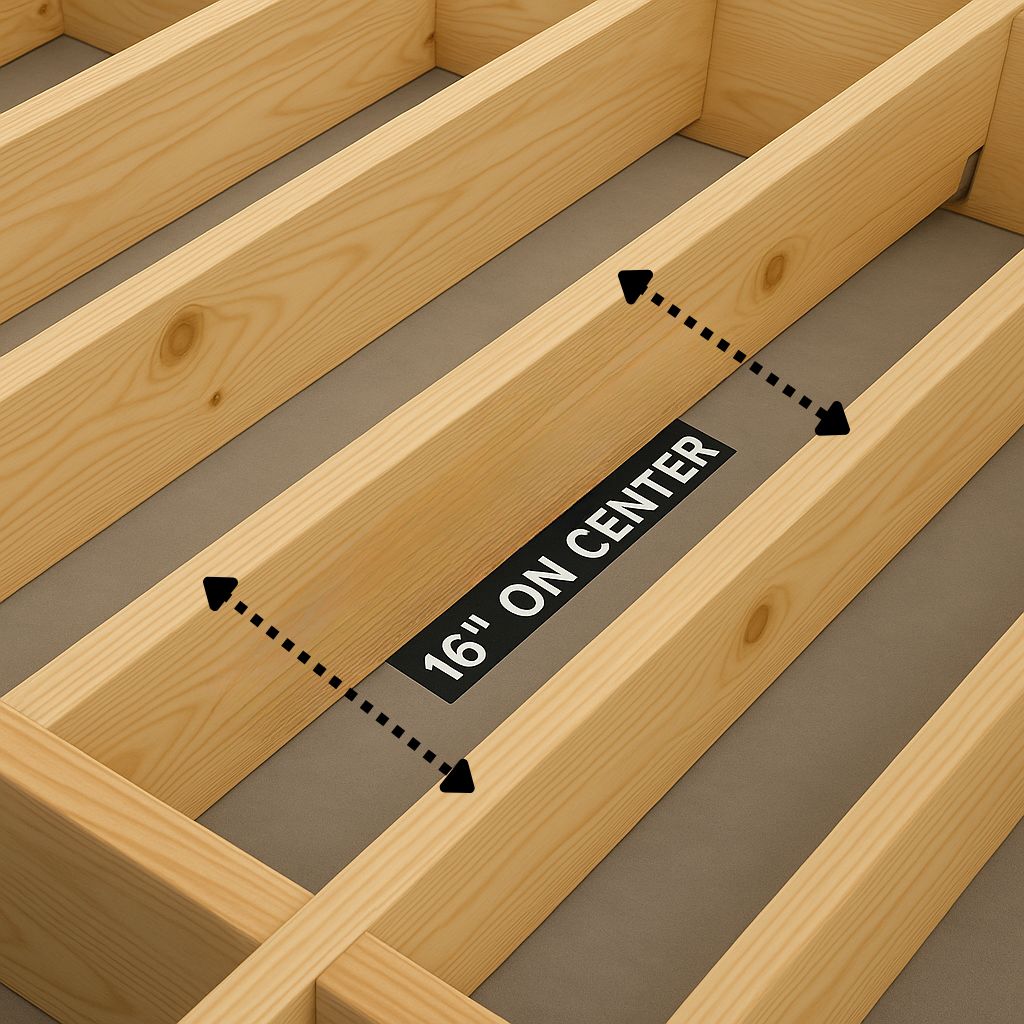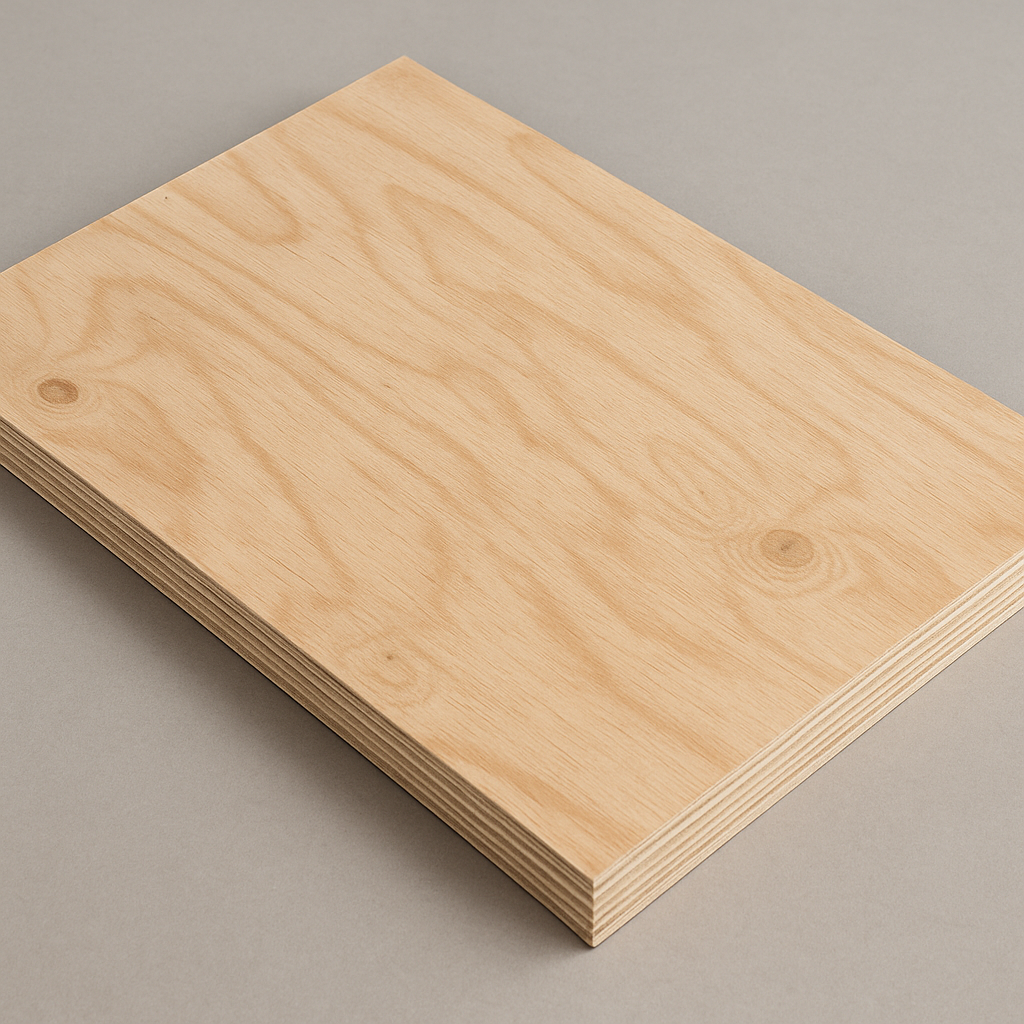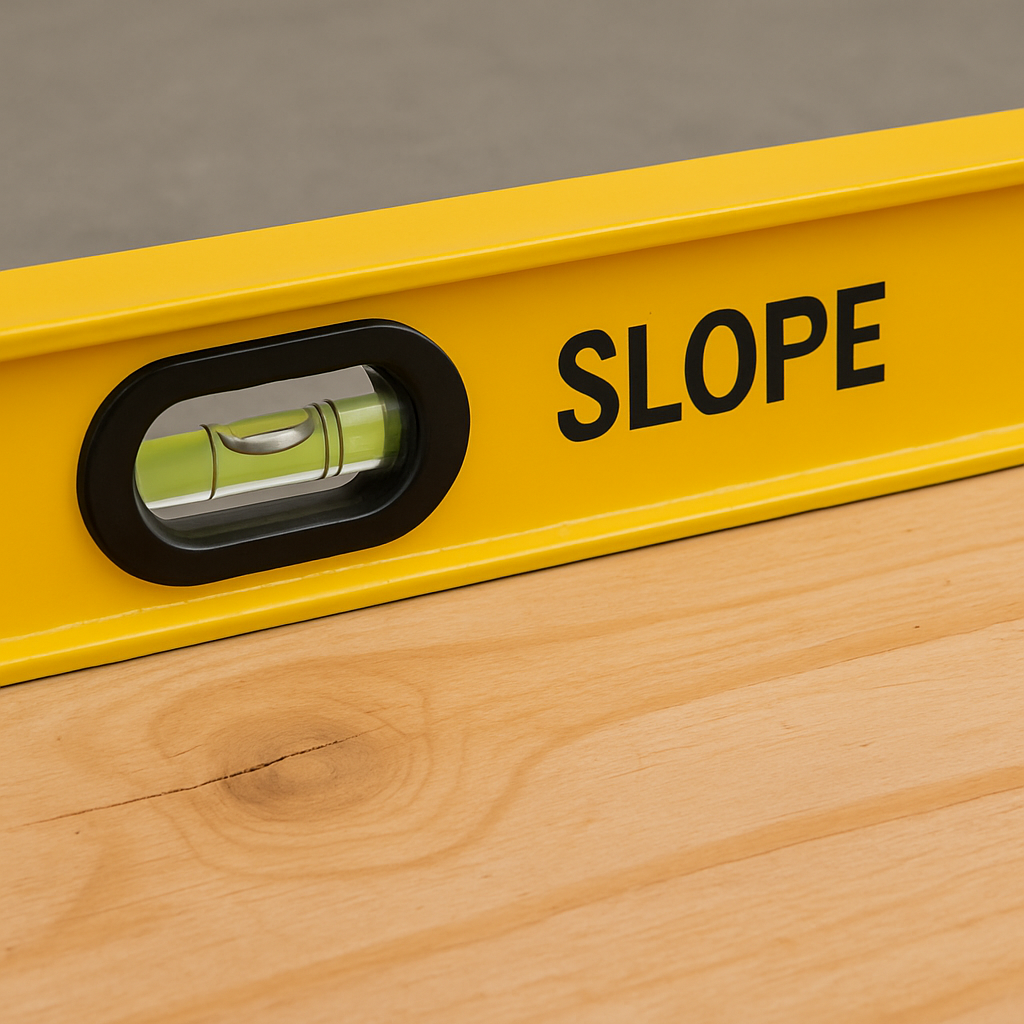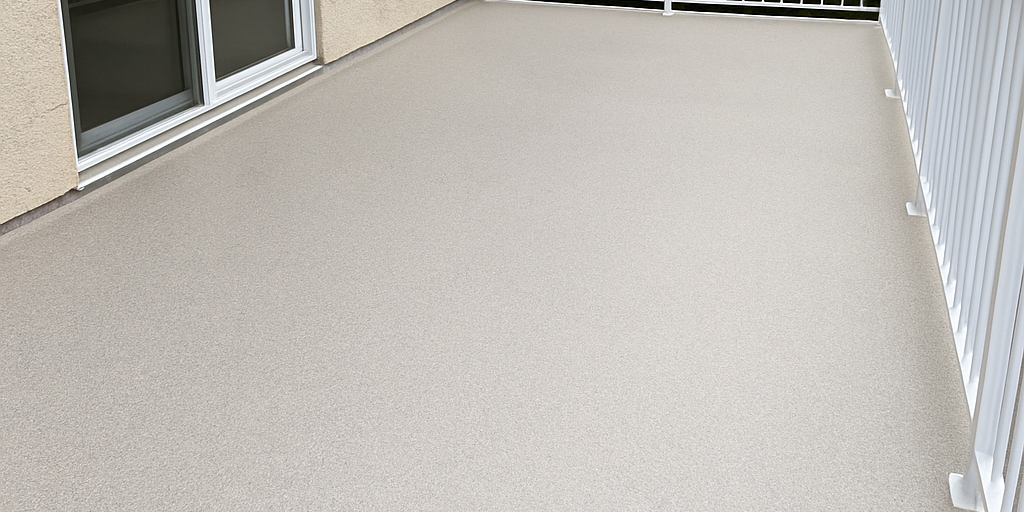If you're considering having us install our waterproof deck system, it’s essential that the deck is built to specific standards to ensure the system functions correctly and lasts for years. Proper framing, sloping, and material choices are all critical in creating a stable foundation for the waterproofing layers.
Below, we’ll cover the basics of how your deck should be constructed to accommodate a waterproof system.
1. Proper Joist Spacing: 16" On Center

The foundation of any deck starts with the framing. For a deck that will later be waterproofed, it’s important to space the joists 16 inches on center. This provides the necessary structural support, ensuring the deck surface can handle the weight of both foot traffic and the waterproofing materials that will be added on top.
Joist spacing that's too wide can cause deflection in the decking material, leading to uneven surfaces and potential cracking of the waterproof layers. By sticking to 16” on center, you'll prevent sagging or bending, which helps the waterproof system adhere and perform as expected.
2. Use 3/4" Plywood – Not OSB

Choosing the right decking material is crucial for waterproof deck systems. We recommend using 3/4-inch exterior-grade plywood as the surface base. Plywood has excellent structural integrity and can handle the rigors of outdoor exposure when waterproofed properly. Unlike OSB (Oriented Strand Board), plywood is more resistant to moisture and offers a stronger surface for the layers of waterproofing materials to bond.
OSB tends to swell and lose strength when exposed to moisture, which can compromise the longevity and effectiveness of a waterproof deck system. Plywood, on the other hand, provides the necessary stability and durability, making it the superior choice for this application.
3. Ensure Proper Slope: 1/4" Per Foot

One of the most important features of any deck that will be waterproofed is its slope. Water needs to flow away from the deck surface rather than pool or collect, which could lead to water damage or deterioration over time. For effective drainage, the deck must have a minimum slope of 1/4 inch per foot.
This gradual slope ensures that rainwater and other forms of moisture will move off the deck efficiently, preventing standing water that could lead to leaks or weaken the waterproof system. Without proper slope, even the best waterproofing materials can fail over time, so it's critical to get this right during the construction phase.
Existing Decks: If your existing deck is flat or lacks adequate slope, there still may be options available to you. Strategic drains can be installed in key areas, allowing the deck to be sloped toward those points for effective water management. This approach can often save the expense of a complete deck rebuild while still providing a durable, long-lasting waterproof surface.
4. Solid Framing and Structural Integrity
Since the deck will need to support several layers of waterproofing material, which can add weight, ensuring the framing is structurally sound is essential. The deck’s structure should meet local building codes and be capable of supporting both the load of the waterproof system and regular usage by people, furniture, and other outdoor equipment.
Using pressure-treated wood for the joists and framing components is another smart move, as it will resist rot and decay, further protecting the integrity of the deck. This is usually not necessary, in most cases though.
5. Attention to Detail: Sealing and Flashing
Once the deck framing and surface are in place, extra attention should be given to sealing around any penetrations, edges, or joints.
Flashing: Proper flashing at transitions between the deck and walls of the home is also essential to prevent water from seeping into vulnerable areas. This requires a minimum of 4 inches of clear access on the wall for proper flashing installation. In some cases, this may involve removing siding or other wall materials to ensure a secure, long-lasting barrier against water intrusion.
Waterproof deck systems are only as effective as the preparation of the surface. So, starting with a well-built, properly sloped, and sealed deck is key to ensuring long-term success.
Built-In Fire Protection for Your Deck...

Our deck system isn't just tough against moisture... it's also one of the best choices for wildfire prone areas. With its cementitious base layers and non-combustible materials, this system provides excellent fire resistance, meeting the strict standards required for high-risk zones. This makes it a smart choice for homeowners and builders looking to improve safety and meet building codes without sacrificing durability or style.

